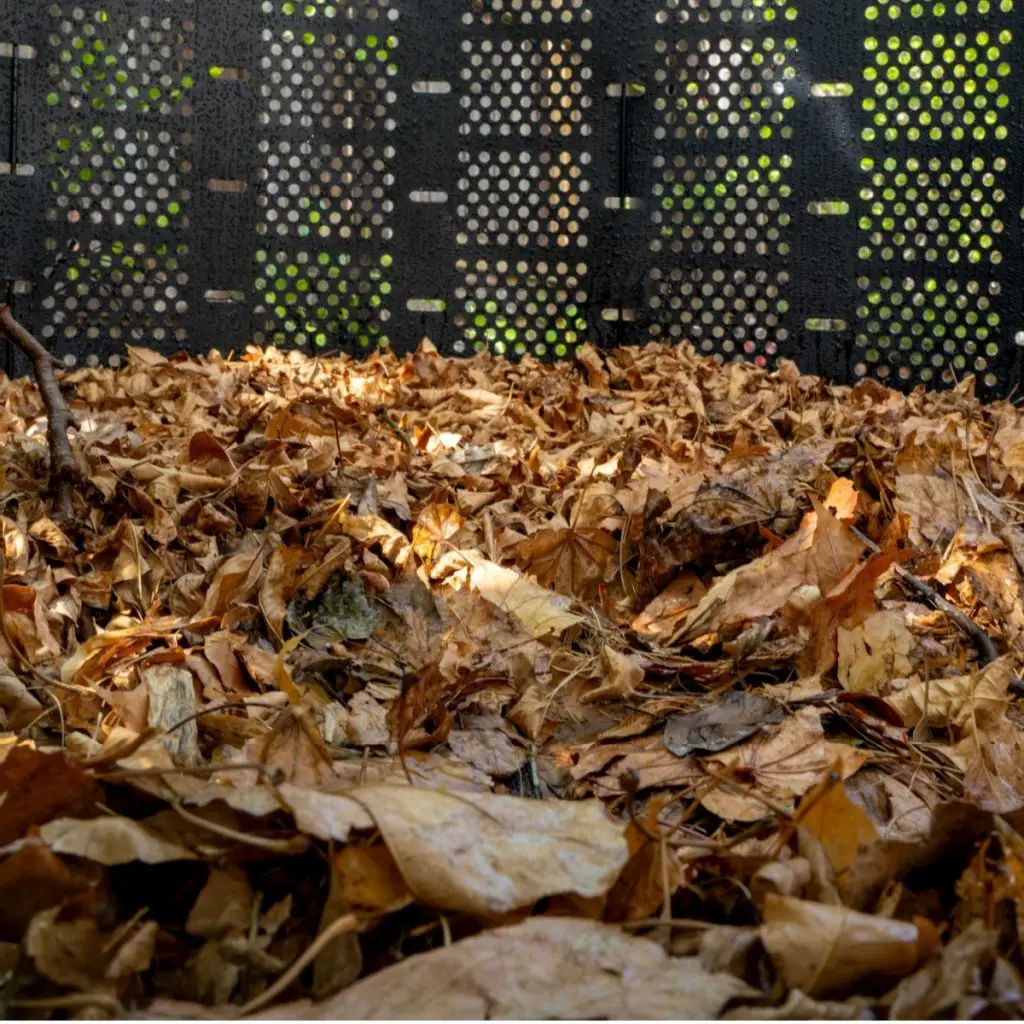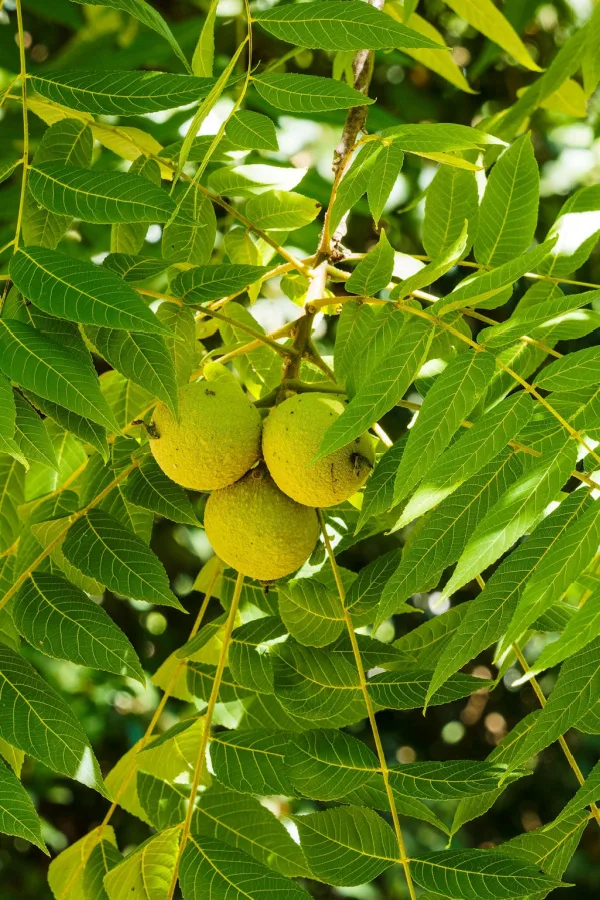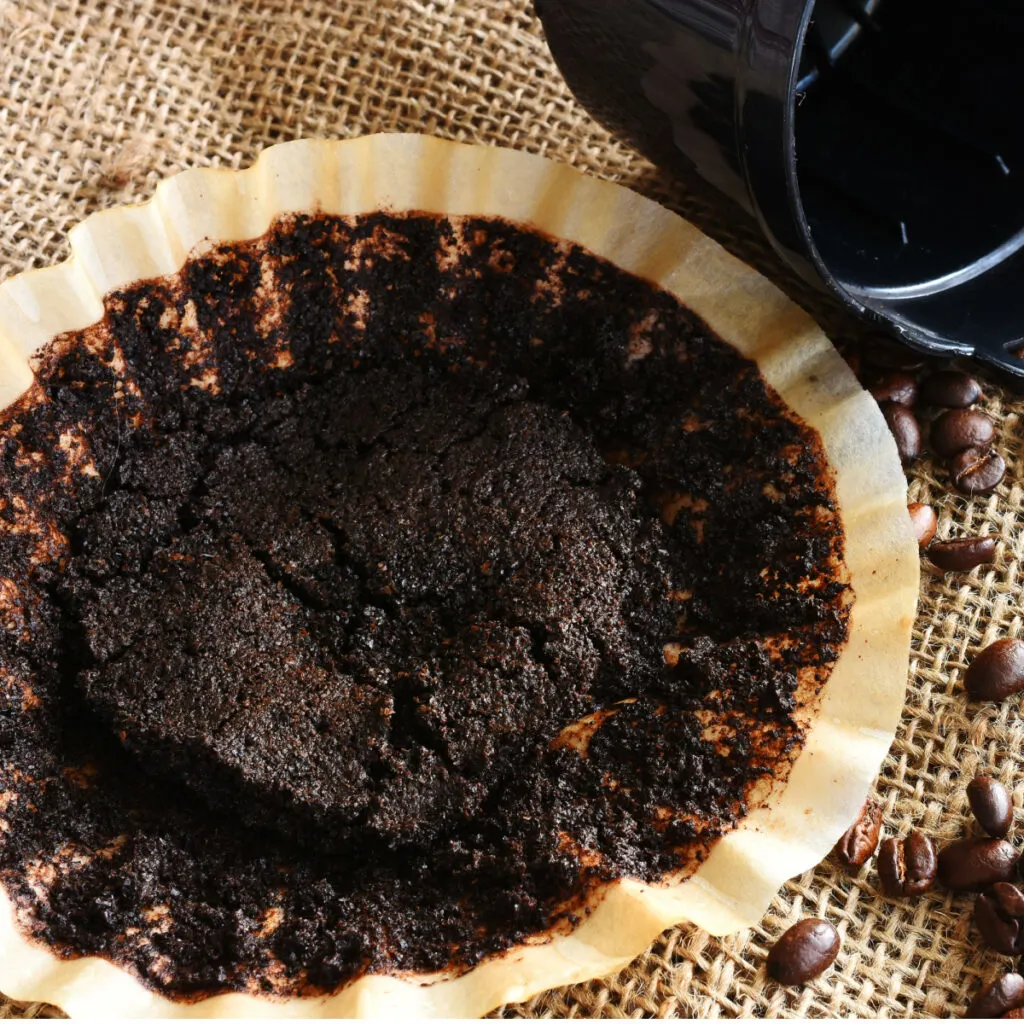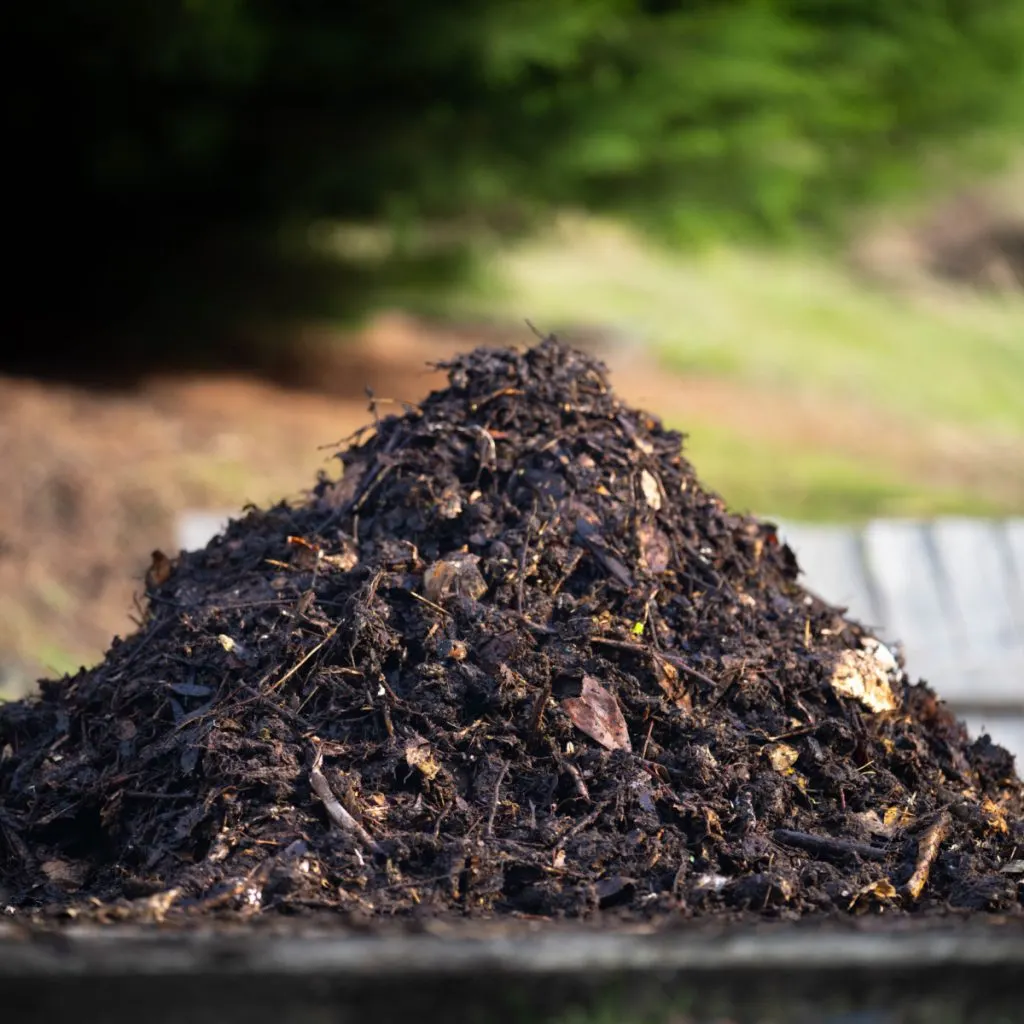Want to know the best way to compost all of those falling leaves this fall?
Composting leaves in the autumn months is certainly a great way to clean up your lawn, flowerbeds and landscape before winter arrives. And, a perfect way to create loads of powerful compost in time for next spring’s plantings as well!
Although making compost from leaves isn’t necessarily a difficult task, there are a few key mistakes gardeners often make when trying to compost their leaves that can create serious issues. Not just for how quickly the pile will decompose – but also for how safe the resulting compost is to use on their plants as well.
The good news is that by simply following a few tried and true methods when creating your pile and avoiding a few leaf varieties that can create future issues, it really is easy to make incredibly powerful, nutrient-filled and safe compost. And by the way – a lot of it!

The Best Way To Make Fast, Healthy Compost From Leaves
Choose The Best Leaves For Composting
While it seems as though you might be able to simply rake up all of your leaves into a pile and let them decompose into compost, it’s actually not that easy. In fact, there are a few very important things to keep in mind before ever beginning to compost leaves.
For starters, the leaves you select play a huge role in how good and/or safe the finished compost will be. Just like not all plants and flowers have the same make-up, the same goes for trees as well. And in the case of compost, not all varieties of tree leaves are good for using in a compost pile.
Some leaves have good nutrient levels and break down quickly into compost. Others have some good qualities but need to be used in moderation. And last but not least, some tree varieties have leaves that can be toxic to the soil and plants. These leaves always need to be left out of a compost pile!
Tree Varieties To Avoid Completely
When it comes to bad trees for leaf composting, black walnut, eucalyptus, horse chestnut, and buckeye trees are the major varieties to always avoid using.
Both walnut and eucalyptus varieties produce toxins that are harmful to many different plants. The plant materials from these trees can cause plants to have stunted growth. In addition, they can actually stop many seeds from germinating altogether.

Horse chestnut and buckeye trees also produce a toxin that can be harmful to humans when consumed in high enough doses. The toxin is mainly found in the nuts of these trees, but it is best to forgo adding their leaves to compost piles to be on the safe side.
The Best Tree Leaves To Use To Make Compost This Fall
The best varieties to use when making compost from leaves are the leaves of ash, birch, elm, cottonwood, maple, poplar, cherry and fruit trees. These trees produce leaves with a structure that breaks down quickly, which is a huge plus for compost piles. In addition, these varieties are also higher in nutrients than other varieties.
Oak tree leaves can be used, but they should only be used in a limited capacity. For best results, be sure to never make your leaf compost piles from more than 20% oak leaves. Why? Because oak leaves are a bit more acidic than others.
In large quantities, this can mess up the pH balance in home compost piles. In addition, oak leaves have lower levels of nitrogen and other useful nutrients compared to the other good leaves above. They can still be uses, but only in moderation.
In addition, trees that produce needles or waxy leaves should also be limited or avoided. This would include pine trees, ginkgo trees and magnolia trees. These types of leaves or needles can take years to break down, limiting the amount of compost you can make.

Shred Those Leaves!
If you are looking to make compost quickly – you need to shred your leaves first! Unfortunately, although a big pile made up entirely of whole leaves will eventually break down – it can take years. In addition, whole leaves can create unwanted moldy, wet, and very smelly compost piles.
When it comes to composting leaves, the smaller the pieces, the quicker they will heat up and start to break down. By simply shredding your leaves prior to creating your compost pile, you can all but ensure you will have compost by next spring.
You can certainly use leaf and debris shredders to finely chop leaves. You can also just as easily use your riding or push mower to run over and break down the leaves. Either way, you will have your leaves ready for fast composting! (Affiliated Product Link: WORX Leaf mulcher)
Make Sure To Add “Green” Materials To Your Pile!
One of the biggest mistakes gardeners can make is to not add any “green” materials to their fall leaf compost pile. Or even worse, not adding any additional materials at all!
While a leaf pile will eventually decompose on its own, it’s best to use a mix of dry “brown” materials with more active “green” materials.

Green materials are items like vegetable peels, green plant materials, coffee grounds, grass clippings, egg shells, and animal manure (cow, horse, chicken, and rabbits). They tend to be high in nitrogen and really help to heat up compost piles.
Brown materials are items such as shredded paper, cardboard, straw, dryer lint, and, of course, dead leaves. They have high amounts of carbon and help to add oxygen to break down items within the compost piles. Especially when greens are mixed in with them.
With traditional composting, you want a mixture near 4 parts brown material for every 1 part green. Since dry leaves add a lot of brown material to a compost pile, the best way to get it going in the fall is to add a fair amount of green to really get it going!
Getting The Most From Your Pile
As with traditional composting, the key to starting leaf compost piles is to get the pile hot and allow the materials to break down quickly. This is especially important for piles that you start in the fall and hope to use in late spring.
A way to help speed up the process is to add already finished compost to your leaf pile. This helps to introduce beneficial and active organisms and microbes. If you do not have fresh compost, it’s important to use a compost starter to help get the pile cooking fast.

Compost starters are wonderful for jump starting a pile with the microbes needed to begin breaking down organic material. A pile will eventually develop these on its own, but fresh compost or a compost starter speeds up the process greatly. (Affiliated Product Link: Compost Starter)
The Best Way To Maintain Leaves In A Fall Compost Pile
Compost piles heat from the middle of the pile. If the materials on the outside of the pile never get a chance to mix in and move to the center of the pile, they will take forever to break down. To prevent this from occurring, turn and mix your pile frequently with a shovel or pitchfork.
In addition, compost piles need moisture to thrive and create heat. If you feel that the middle is dry, add some moisture. The pile should feel damp but never saturated to the point where you can wring water out of it.
With the right moisture in the pile, and the leaves chopped and mixed with additional ingredients – you will have great compost by next spring! For more on using leaves in the fall – be sure to see our article: How To Recharge & Protect Your Garden With Leaves This Fall & Winter.
Simple Garden Life
Follow Our Facebook Page For Even More Great Tips! Simple Garden Life Facebook Page
Simple Garden Life is a website dedicated to keeping gardening fun, simple and enjoyable! We publish two new articles each week along with a new garden podcast episode every two weeks. This article may contain affiliate links.
